
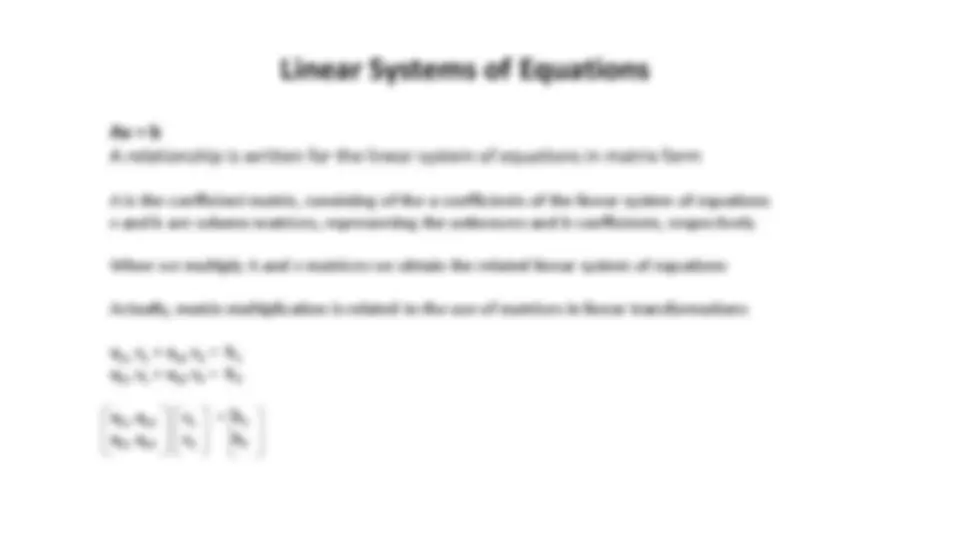
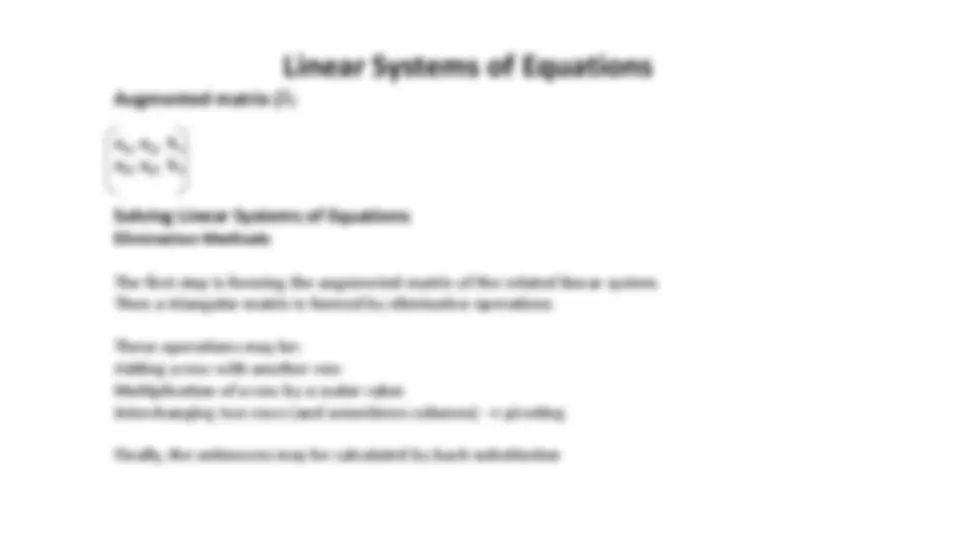
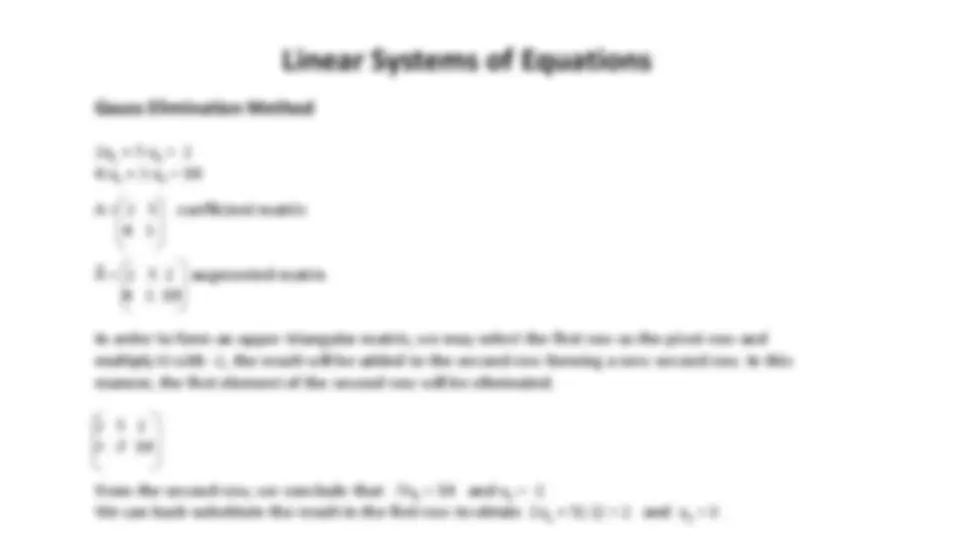
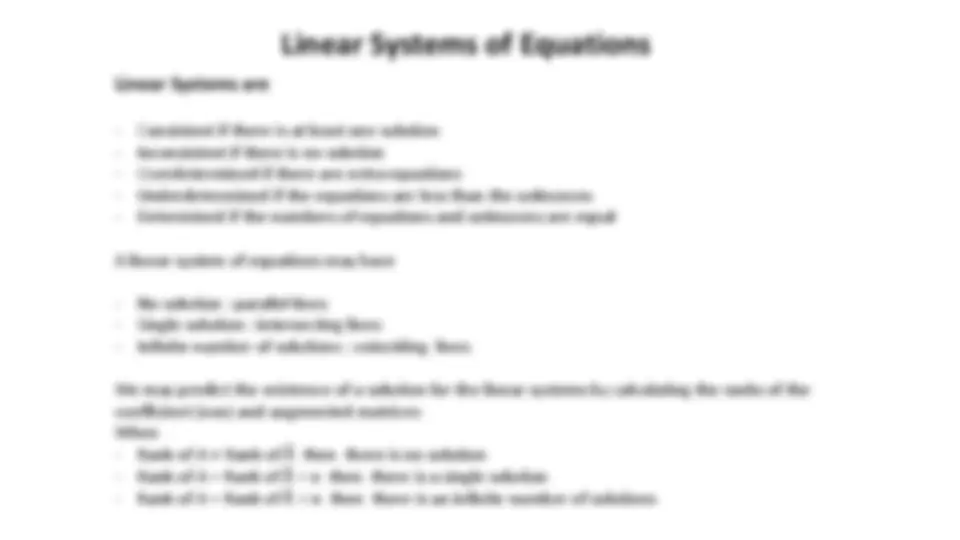
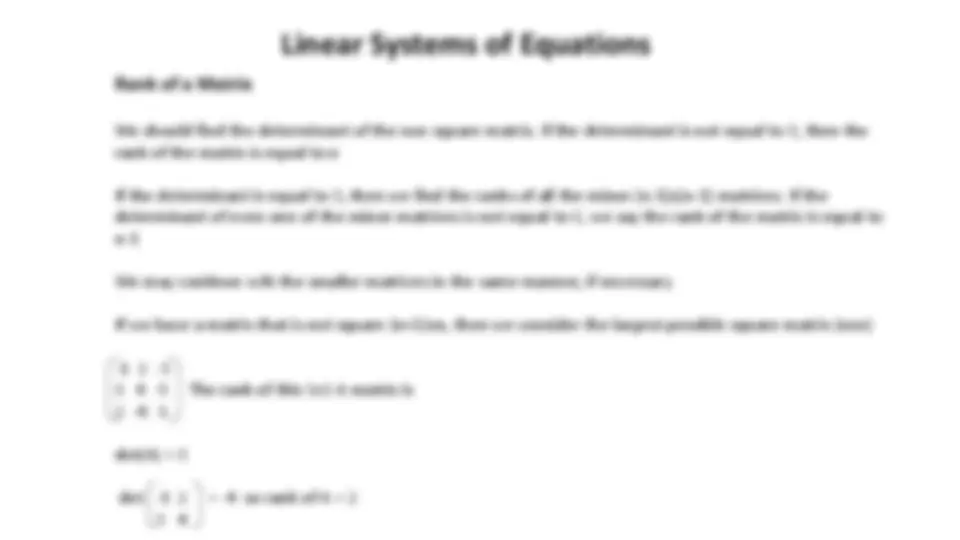
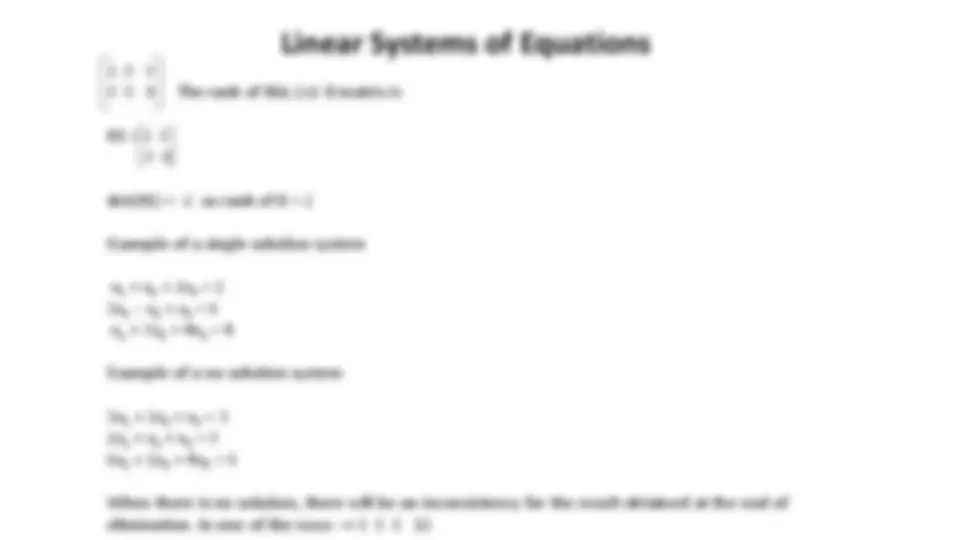
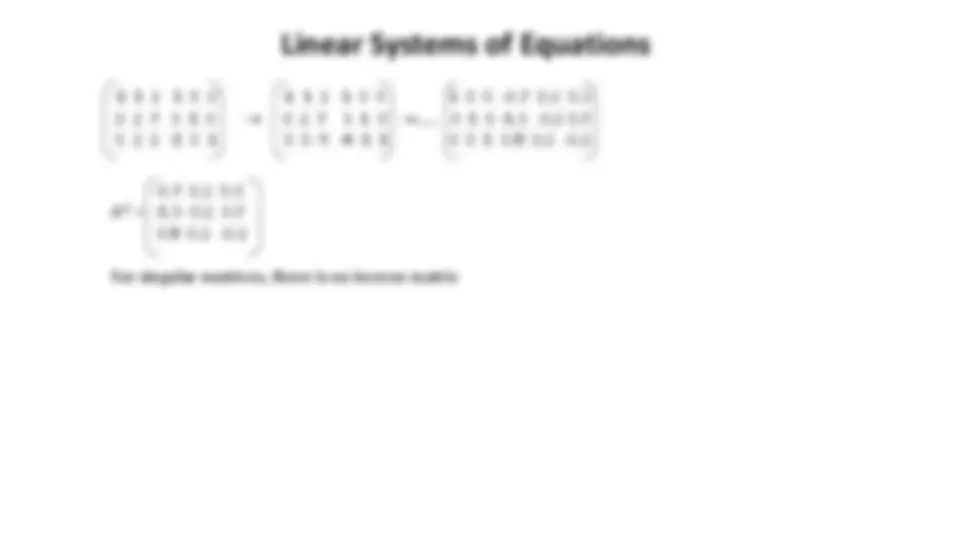
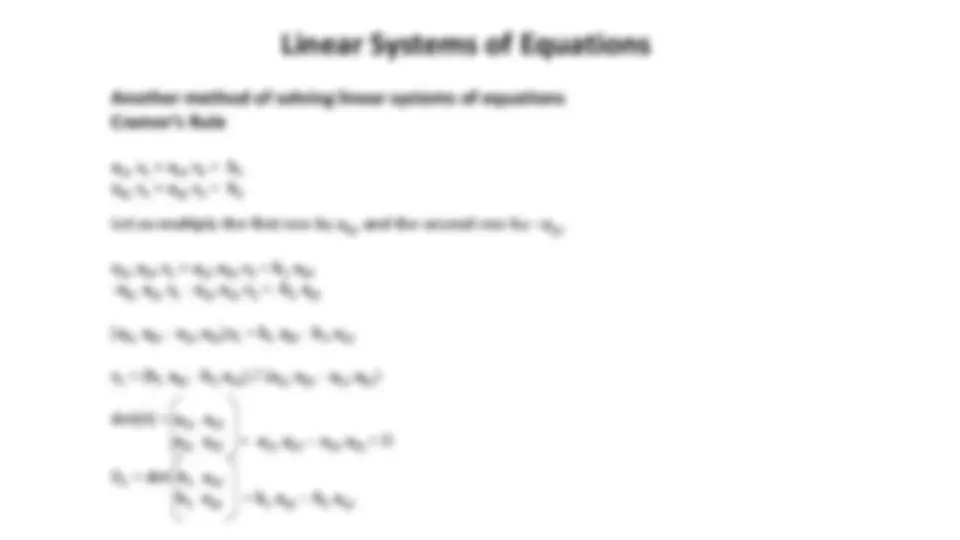
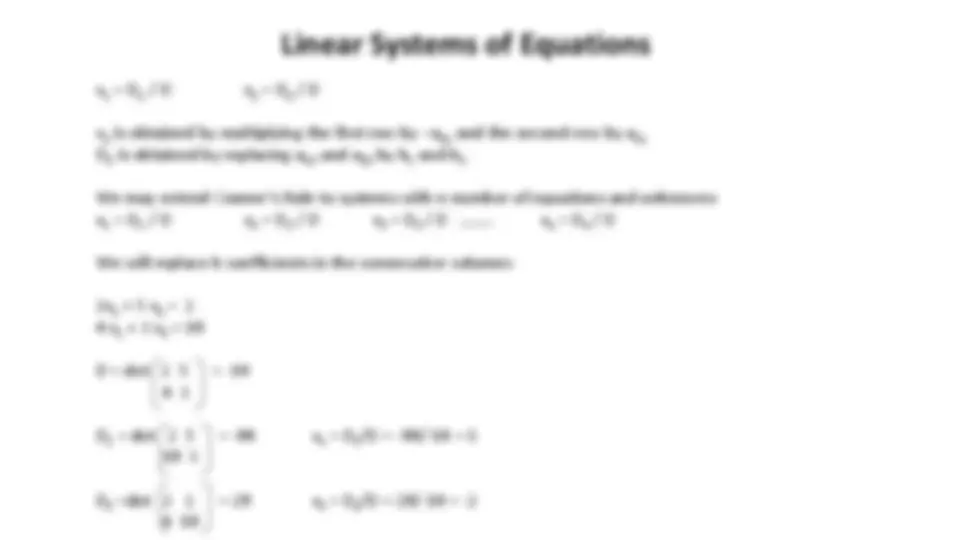
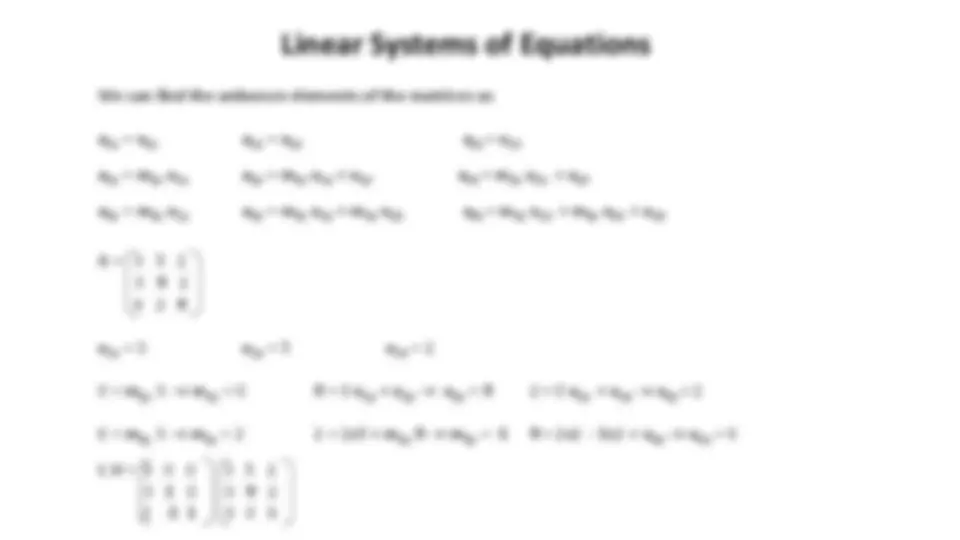
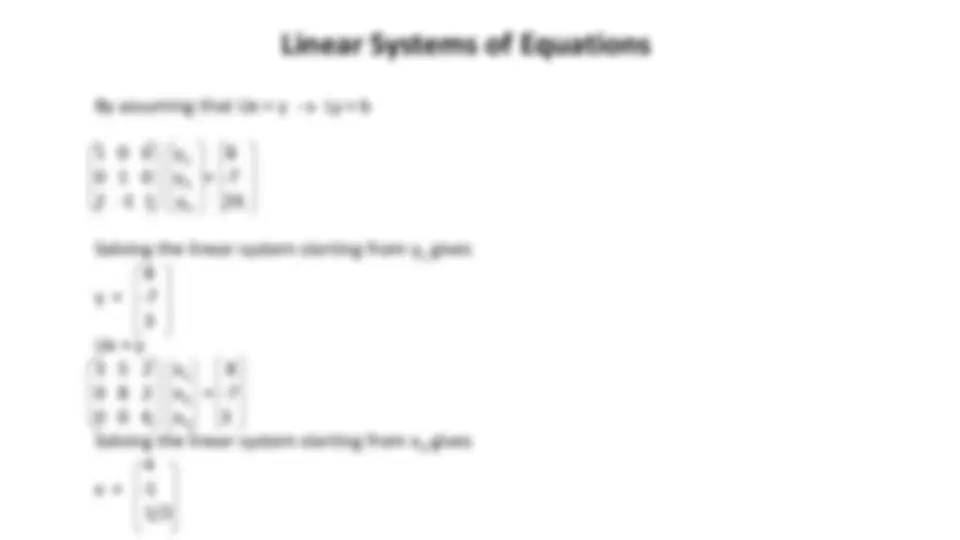


Study with the several resources on Docsity

Earn points by helping other students or get them with a premium plan


Prepare for your exams
Study with the several resources on Docsity

Earn points to download
Earn points by helping other students or get them with a premium plan
Community
Ask the community for help and clear up your study doubts
Discover the best universities in your country according to Docsity users
Free resources
Download our free guides on studying techniques, anxiety management strategies, and thesis advice from Docsity tutors
Engineering mathematics lecture notes
Typology: Lecture notes
1 / 19

This page cannot be seen from the preview
Don't miss anything!












11
1
12
2
13
3
1
21
1
22
2
23
3
2
m
1
m
2
m
3
m
a 11 a 12 b 1 a 21 a 22 b 2
Elimination Methods The first step is forming the augmented matrix of the related linear system Then a triangular matrix is formed by eliminative operations These operations may be: Adding a row with another row Multiplication of a row by a scalar value Interchanging two rows (and sometimes columns) pivoting Finally, the unknowns may be calculated by back-substitution
2x 1 + 5 x 2 = 2 4 x 1 + 3 x 2 = 18 A = 2 5 coefficient matrix 4 3 Ã = 2 5 2 augmented matrix 4 3 18 In order to form an upper triangular matrix, we may select the first row as the pivot row and multiply it with - 2, the result will be added to the second row forming a new second row. In this manner, the first element of the second row will be eliminated. 2 5 2 0 - 7 14 From the second row, we conclude that - 7x 2 = 14 and x 2 = - 2 We can back-substitute the result in the first row to obtain 2x 1 + 5(-2) = 2 and x 1 = 6
2x 1 + 5 x 2 = 2 4 x 1 + 3 x 2 = 18 A = 2 5 coefficient matrix 4 3 Ã = 2 5 2 augmented matrix 4 3 18 Here, we should form a diagonal or unit matrix. If we select the first row as the pivot row and multiply it with - 2, the result will be added to the second row forming a new second row. In this manner, the first element of the second row will be eliminated. We continue to eliminate the second element of the first row. For this purpose, we multiply the second row by 5/7 and add it to the first row. If we divide the first row by 2 and the second row by - 7 we obtain a unit matrix. 2 5 2 2 0 12 1 0 6 0 - 7 14 0 - 7 14 0 1 - 2 From the second row, we conclude that x 2 = - 2 and from the first row we see that x 1 = 6
0 0 - 1 The rank of this 2x3 B matrix is B1 = 2 0 0 - 1 det(B1) = - 2 so rank of B = 2 Example of a single solution system
Example of a system with infinite number of solutions 3x 1 + 2x 2 + 2x 3 - 5x 4 = 8 0.6x 1 + 1.5x 2 + 1.5x 3 – 5.4x 4 = 2. 1.2x 1 – 0.3x 2 – 0.3x 3 + 2.4x 4 = 2. When there are infinite number of solutions, one of the rows will have all 0s In one of the rows 0 0 0 0 Actually, here we have 4 unknowns but 3 equations
a 11 x 1 + a 12 x 2 = b 1 a 21 x 1 + a 22 x 2 = b 2 Let us multiply the first row by a 22 and the second row by – a 12 a 11 a 22 x 1 + a 12 a 22 x 2 = b 1 a 22
We can form first the upper triangular matrix by elimination and then by considering matrix multiplication obtain the elements of the lower triangular matrix For a square matrix of nxn, we may construct the upper and lower matrices as u 11 u 12 u 13 1 0 0 0 u 22 u 23 m 21 1 0 0 0 u 33 m 31 m 32 1